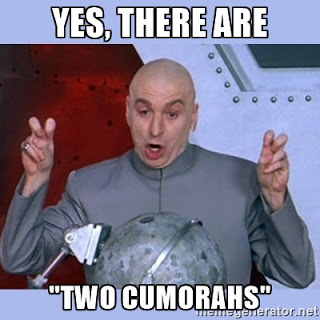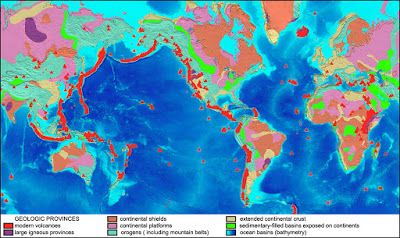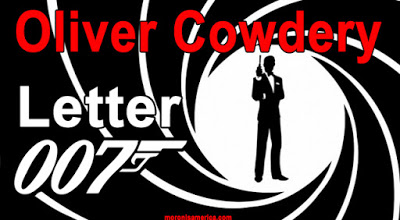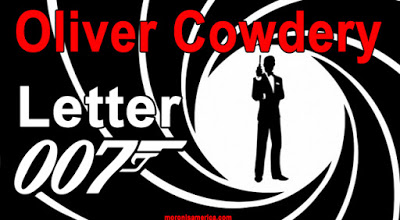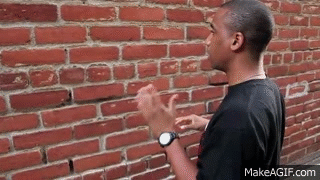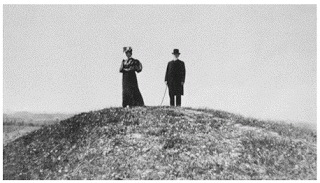Author: Jonathan Neville
Summary for new readers
On this blog, I discuss issues related to Book of Mormon geography and historicity.
In my view, there is one fundamental choice that everyone interested in the Book of Mormon needs to make:
Is the Hill Cumorah (Mormon 6:6) in New York or elsewhere?
It’s a simple choice.
What do you think?
_____________________________
I take the position that the Book of Mormon events took place in North America (north of Central America) and that Cumorah is in New York. If these concepts seem obvious to you, great. You haven’t been persuaded by the handful of LDS scholars who are now spending hundreds of thousands of dollars to promote their insistence that the Book of Mormon took place in Mesoamerica.
I’ve made over 300 posts on this topic on this blog alone. I’ve looked at the issue from many perspectives. I’ve examined 1) what the scholars have published, 2) relevant archaeology, anthropology, geology, geography, and most importantly, 3) the text itself.
From every perspective–save one–the evidence supports the North American setting.
The sole exception is the Mesomania perspective. Mesomania is seeing Mesoamerica in the text and not being able to unsee it.
If you think Cumorah is not in New York, then you have been persuaded by the LDS scholars who don’t even want you to know about alternative ideas–or what Joseph Smith and Oliver Cowdery said about the subject.
_____________________________
Here’s another way to look at it:
If you think Cumorah is in New York, then you agree with Oliver Cowdery, Joseph Smith, David Whitmer, and everyone who knew those men personally. You agree with Joseph F. Smith, George Albert Smith, and Joseph Fielding Smith.
If you think Cumorah is not in New York, then you agree with most LDS Book of Mormon scholars today.
It’s that simple.
That’s why I say if you don’t think Cumorah is in New York, it really doesn’t matter where you think it is.
_____________________________
Feel free to look around and comment. Most readers email me instead of commenting, but comments are welcome.
I especially like to hear from people who disagree. My objective here is to focus on facts and logic, so I’m eager to correct any errors.
Source: Book of Mormon Wars
Again with the volcanoes
Book of Mormon Central continues to double down on the volcano nonsense.
Usually, Mesoamerican advocates claim they want to stick with the text. What they really mean is, they want to stick with their interpretation (i.e., their translation) of the text.
In this case, the text never mentions volcanoes. With that in mind, look at this KnoWhy:
https://knowhy.bookofmormoncentral.org/content/what-caused-the-darkness-and-destruction-in-the-34th-year
I’ve written about the volcano theory before. It is pure confirmation bias. Here’s the logic:
1. BOMC insists the Book of Mormon took place in Central America.
2. Central America is part of the ring of fire of active volcanic activity.
3. Therefore, the destruction in 3 Nephi must have been caused by volcanoes.
The Mesoamerican advocates want you to believe that in the 1,000-year history of the Nephites in Mesoamerica, even though they never once mentioned volcanoes, they actually lived in one of the most active volcanic areas on the planet.
In that 1,000 years, there was only one volcanic eruption, and it was the one in 3 Nephi.
But even then, the Book of Mormon authors forgot to mention a volcano!
If you want to learn about a real-life natural disaster that closely matches the 3 Nephi description without the addition of volcanoes, go here: https://earthquake.usgs.gov/earthquakes/states/events/1811-1812.php
Source: Book of Mormon Wars
Letter VII memes
I keep hearing reports that more and more people are reading and discussing Letter VII. We’re still a long way from having every member of the Church read it during 2016, but we’re getting closer all the time. Sharing these memes is one way to help.
You can share the link to Letter VII in the Joseph Smith Papers so people can read Letter VII right out of Joseph’s own history, here.
You can share the link to the original publication in the Messenger and Advocate here.
You can share the link to the Second Edition on Amazon here.
__________________________
Here’s the meme to help people remember which of Oliver Cowdery’s letters explains the Hill Cumorah is in New York:
You can also find links to Letter VII in the Times and Seasons and the Gospel Reflector.
Or, people can read the first edition of my little book at Book of Mormon Central here. (Note: if you refer people to that site, be sure to warn them that Book of Mormon Central (BOMC) promotes Central America exclusively. BOMC still refuses to remain neutral on Book of Mormon geography or to even inform members of the Church that there are alternatives to Mesoamerica. A perfect example is how they keep insisting the 3 Nephi destruction was caused by volcanoes, even though the text never once mentions a volcano.)
Source: Letter VII
Letter VII memes
I keep hearing reports that more and more people are reading and discussing Letter VII. We’re still a long way from having every member of the Church read it during 2016, but we’re getting closer all the time. Sharing these memes is one way to help.
You can share the link to Letter VII in the Joseph Smith Papers so people can read Letter VII right out of Joseph’s own history, here.
You can share the link to the original publication in the Messenger and Advocate here.
You can share the link to the Second Edition on Amazon here.
__________________________
Here’s the meme to help people remember which of Oliver Cowdery’s letters explains the Hill Cumorah is in New York:
You can also find links to Letter VII in the Times and Seasons and the Gospel Reflector.
Or, people can read the first edition of my little book at Book of Mormon Central here. (Note: if you refer people to that site, be sure to warn them that Book of Mormon Central (BOMC) promotes Central America exclusively. BOMC still refuses to remain neutral on Book of Mormon geography or to even inform members of the Church that there are alternatives to Mesoamerica. A perfect example is how they keep insisting the 3 Nephi destruction was caused by volcanoes, even though the text never once mentions a volcano.)
Source: Book of Mormon Wars
Presidents Joseph F. Smith and George Albert Smith on Cumorah
 |
| Lucy Woodruff Smith standing on top of the Hill Cumorah with Pliny T. Sexton |
The LDS scholars who continue to promote the Mesoamerican setting like to say Joseph Fielding Smith didn’t know what he was talking about when he denounced the two-Cumorah theory. They say the same about two other Presidents of the Church: Joseph F. Smith and George Albert Smith. See my comments at the end of this post.
At the April 1906 conference, George Albert Smith related events that took place during his visit to New York with President Joseph F. Smith. You can read his comments here:
https://archive.org/stream/conferencereport1906a#page/n57/mode/2up/search/cumorah
The photo shows his wife, Lucy, standing on top of the Hill Cumorah with Pliny t. Sexton, who owned the hill at the time. This photo is in the manual Teachings of the Presidents of the Church: George Albert Smith. Here is the entire caption: “George Albert Smith was among the General Authorities assigned to purchase and preserve important Church history sites. In this photograph is Lucy Woodruff Smith standing on top of the Hill Cumorah with Pliny T. Sexton, who was the owner of most of the hill. By 1928 the Church acquired the Hill Cumorah and all of the property around it.”
____________________
Here are the comments by George Albert Smith:
“We visited the Hill Cumorah and were accorded the courtesy of going thereon by the wife of Mr. George Sampson, a brother of Admiral Wm. Sampson, who before his death owned the property. When we went up there and looked around, we felt that we were standing on holy ground. The
brethren located, as near as they thought was possible, the place from which the plates of the Book of Mormon were taken by the Prophet. We were delighted to be there. Looking over the surrounding country we remembered that two great races of people had wound up their existence in the vicinity, had fought their last fight, and that hundreds of thousands had been slain within sight of that hill.
Evidence of the great battles that have been fought there in days gone by are manifest in the numerous spear and arrow-heads that have been found by farmers while plowing in that neighborhood. We were fortunate enough to obtain a few of the arrowheads. Upon the hill, near a
little grove of timber, the party stood and sang that glorious hymn:
An angel from on high
The long, long silence broke;
Descending from the sky,
These gracious words he spoke:
Lo! in Cumorah’s lonely hill,
A sacred record lies concealed.
“And then, under the inspiration of the Lord, President Smith offered one of the most profound and beautiful prayers I have ever listened to. Everyone present was melted to tears. We felt the presence of the Spirit of our Father; and all who were there can testify that it was one of the most supremely happy moments of their lives.”
____________________________
Over a hundred years later, some prominent LDS scholars still insist Parley P. Pratt, who wrote the words to that hymn (which is still in our hymnal), was merely repeating a false tradition started by unknown early Church members, because the “real” Hill Cumorah is somewhere in Mexico.
These scholars insist Joseph F. Smith, George Albert Smith, and Joseph Fielding Smith didn’t know what they were talking about. They insist these men, like Joseph Smith himself, adopted and embraced the false tradition that Cumorah is in New York.
These scholars insist the hill in New York is “clean” with no artifacts.
These scholars, including the contributors to FairMormon, Book of Mormon Central, the Interpreter, and the rest of the scholarly publications, insist the hill Cumorah is actually somewhere in Mexico, although they’re not sure where. Other scholars insist the hill Cumorah is in Baja, or Panama, or elsewhere–just so long as it is not in New York.
Again, regarding the Hill Cumorah in New York, it’s a clear choice: Joseph Smith, Oliver Cowdery, Joseph F. Smith, George Albert Smith, and Joseph Fielding Smith vs. modern LDS scholars.
____________________________
Another report of the trip explained that President Smith’s prayer was not recorded:
“They visited the Hill Cumorah, from which place a most excellent view of the country round is afforded. The party of course was reminded of the great and final battle of the Jaredites which took place around this hill, and later between the Lamanites and Nephites, and as souvenirs some of them brought flint arrow heads, which are continually being gathered now and sold as souvenirs. Prayer was offered on the hill and the site was pointed out as near as possible where the plates from which the Book of Mormon was translated were concealed. President Smith offered the prayer, but much to the regret of all it was not reported.”
http://lds-church-history.blogspot.com/2012/01/george-albert-smith-january-4-1906.html
_______________________
For more history about Cumorah, go here:
http://publications.mi.byu.edu/publications/jbms/13/1/5101b46407de713-1-2.pdf
Source: Letter VII
A reason to question consensus
- Michael Crichton
Source: Book of Mormon Concensus
The neutrality illusion
― Voltaire
In politics, business, science, and most other fields, whoever has the dominant position or theory likes the status quo just fine. When challenged, the dominant position or theory typically proposes some form of neutrality. For the dominant party, nothing could be better than an agreement on neutrality that preserves the status quo.
When viewed through the perspective of history, it is bizarre that the concept that Cumorah is in New York–and no place else–is now considered controversial or even heretical. In Joseph’s day, it was ubiquitous, published in 3 Church newspapers, included in Joseph’s own history, etc. In the lifetime of those who knew him, the New York Cumorah was universally accepted.
But starting with RLDS scholars in the 1920s, and over the objection of Joseph Fielding Smith, LDS scholars gradually reached a consensus that Cumorah is not in New York. This position, sometimes called the two-Cumorah theory, underlies the Mesoamerican theory.
The Mesoamerican theory is so well established that it shows up in the Hill Cumorah pageant, in the illustrations in the missionary and foreign language editions of the Book of Mormon, in the Joseph Smith Papers, and throughout the publications of LDS scholars and educators.
And the scholars want to keep the status quo.
It’s understandable.
But it’s not acceptable.
I’m going to make some announcements in the next week or so that might make this situation clearer for everyone involved.
In the meantime, I’m traveling and probably won’t have time to post.
So keep reading Letter VII and sharing it with as many people as you can.
🙂
Source: Book of Mormon Wars
Some deplorable Mesomaniac activity
First, let me explain that term. As anyone who has read the Mesomania book knows, I think Mesomania is not really a choice; it’s a psychological condition that is nearly universal among LDS because of the artwork and educational materials–including Church manuals and magazines–that we’ve all been exposed to since childhood. Mesomania is one of the first elements of Mormonism that investigators learn about because of the artwork in the blue editions of the Book of Mormon. So it’s no one’s fault that they have Mesomania; it’s something every LDS has to some degree.
Consequently, I don’t think the term Mesomaniac applies to the vast majority of the members of the Church. I reserve that term for people who are so obsessed with the Mesoamerican setting that they can’t tolerate alternative ideas.
In the last few days, I’ve had a shocking number of people tell me stories of how they’ve been treated by Mesomaniacs. These Mesomaniacs include CES faculty, Priesthood leaders, and fellow ward members. In many cases, challenges to the Mesoamerican theory is met with charges of apostasy, shunning, and even attempts to shame. It’s deplorable, to use a suddenly popular expression.
I attribute this Mesomaniacal reaction to defensiveness, actually. The basic premises of the Mesoamerican theory are so indefensible, in my opinion, that when challenged, proponents have no alternative but to lash out this way.
I need to clarify another point. There are some proposed Mesoamerican settings that also accept the New York Cumorah. By my definition, those are not a result of Mesomania. In fact, Arnold Friberg himself depicted the New York Cumorah, not some mountain in Mexico, and if we had left that painting in the blue editions, we’d have fewer problems than we have now.
The real problem with Mesomania is when it leads to the rejection of Oliver Cowdery, Joseph Smith, and David Whitmer when it comes to the Hill Cumorah in New York. IOW, Mesomania = the Two-Cumorahs approach. In many cases, it is driven by the conviction that Joseph Smith wrote the anonymous articles in the 1842 Times and Seasons. Some of the Mesomania scholars have told me those articles are not a significant factor in their deliberations and I accept that. There is zero historical evidence that Joseph wrote those articles. But among many, many members of the Church, Joseph’s authorship of these anonymous articles is fundamental and turns them into Mesomaniacs.
For now, let me suggest this. If you’re in a CES class (broadly defined to include seminary, institute, Sunday School, BYU (any campus), a fireside, etc.) and someone promotes the Mesoamerican theory, you’re perfectly entitled to observe that the Church has no official position on Book of Mormon geography. If, as happens far too often, the presenter argues that all the scholars agree, you should 1) point out that not all the scholars agree, 2) that there is no doctrinal reason to accept or even rely on what any scholar says, and 3) ask if he/she has read Letter VII. You’ll soon see that the presenter has never heard of Letter VII. Or, if they have, they haven’t read it. Instead, they’ve read some dismissive obfuscation in FairMormon, the Interpreter, or the like.
All we want is for people to read and consider Letter VII. Everyone in the Church during Joseph’s lifetime was familiar with it and accepted it. There are some LDS scholars today who insist Oliver Cowdery made it up, or was speculating, and therefore they insist that either way he was wrong. They’re entitled to their opinions and the consequences that flow from undermining the credibility and reliability of one of the Three Witnesses (who was the Assistant President of the Church when he wrote Letter VII), but you’re not obligated to agree with them.
No one is.
We want every member of the Church to become educated on this specific issue and then to reach his/her own conclusions.
So if you haven’t read Letter VII, yet, do it right now. If you have, share it with everyone you know.
And if people call you an apostate for talking about Letter VII, remind them you’re reading it out of Joseph’s personal history and have them search it for themselves in the Joseph Smith Papers.
______________________
NOTE: Letter VII is far from the only problem with the Mesoamerican theory, but it is a fundamental document in Church history that every member of the Church today should be familiar with. Portions of Letter I are already included in the Pearl of Great Price, and in my opinion, portions of Letter VII should be added. It is that fundamental to understanding the Book of Mormon, not only its geography but the covenant and promises it contains. I doubt that will happen anytime soon, but now that the Joseph Smith Papers are available to anyone with Internet access, anyone can read Letter VII in Joseph’s own history.
Source: Book of Mormon Wars
